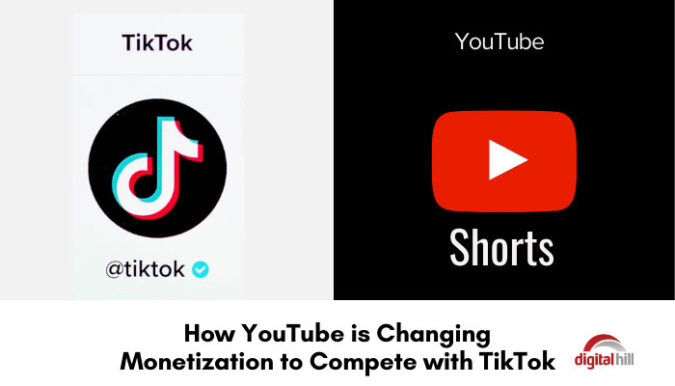How YouTube is Changing Monetization to Compete with TikTok

With social media content being so popular, social media platforms are currently in a fierce battle for creator loyalty. On one side, Twitch is implementing new monetization options for creators, while Twitter is offering new income pathways from tweeting. TikTok also offers multiple income pathways. Due to all these changes and competition, YouTube is changing monetization by updating its Partner Program to be more creator-friendly.
Changes to the YouTube Partner Program
YouTube recently decreased the threshold required for creators to monetize their content. This is to help attract more creators to the platform. The newly approved threshold is a reduction from the previous mandatory 1000 subscribers and over 4000 watch hours within a year. Now, users must have just 500 subscribers, with three public uploads over 90 days and either 3000 watch hours or three million Shorts views.
It is important to note that these changes won’t unlock all revenue generation options for creators. This is because share ad revenue is restricted to creators who meet certain additional requirements. However, these changes do make it easier for aspiring creators to get started on the platform.
Better Monetization for YouTube Shorts
Despite many progressive changes in social networks, there’s no short-form platform that has its share ad revenue completely figured out yet. This makes it challenging for content creators on these platforms to rely on their content for steady income. However, recent announcements from YouTube could improve the situation.
YouTube now allows content creators to earn revenue from Shorts through the Partner Program. Unlike before, YouTube Shorts creators can now qualify for the Partner Program, making them eligible for ad revenue. Eligible content creators earn 45% of ad revenue generated from their videos. This is the first-time revenue sharing is available for short-form video content on social platforms.
TikTok is also beginning to experiment with ad revenue sharing. However, TikTok’s focus is on the advertiser and not the creator. Furthermore, only the top 4% of videos on TikTok can be monetized through its Pulse Program. Thus, most creators find it impossible to earn from TikTok’s Creator Fund.
That said, YouTube Shorts is aiming to become TikTok’s greatest competitor. If creators can earn more on Shorts than from their TikTok content, they’ll certainly direct more efforts to create original content for YouTube. Even though long-form YouTube content brings in more revenue, Shorts can help content creators reach more people.
How YouTube Plans to Share Ad Revenue
Figuring out how to split ad revenue from short videos is quite tricky. Embedding an eight-second ad in between a 30-second video is certainly impossible. Furthermore, who should earn the ad revenue share if the ad is in between two algorithmically generated video feeds?
Ideally, the creator whose video introduced you to the feed, the one whose video appeared before, and the creator whose video appeared after the ad should get a share of the revenue. YouTube has found a hack for this baffling issue.
For starters, ads revenue for YouTube Shorts significantly differs from ads from long-form content. Ads for Shorts are not attached to specific videos. Instead, they run between videos. Every month, revenue generated from Shorts ads is pooled and used to pay YouTube Shorts creators based on their total views. It is also used to cover the costs of licensing the music that creators use on the platform.
Will YouTube’s Competition Affect TikTok?
YouTube Shorts have quickly become popular on the platform. In February, YouTube figures showed that Shorts views surpassed 50 billion, which reflects the current increase in video consumption by platform users. YouTube is now pushing to onboard more TikTok-aligned content creators by offering tempting monetization potential.
However, while YouTube offers better monetization opportunities, creators should consider several other factors when deciding between Shorts and TikTok videos. For instance, TikTok has a younger audience, with most users under 30 years. On the other hand, YouTube has a diverse user base. This can directly affect the type of content that performs well on either platform. The best bet for content creators is to post on both platforms and see which generates the most views.
